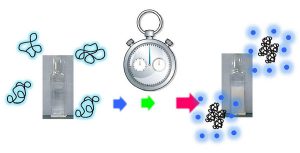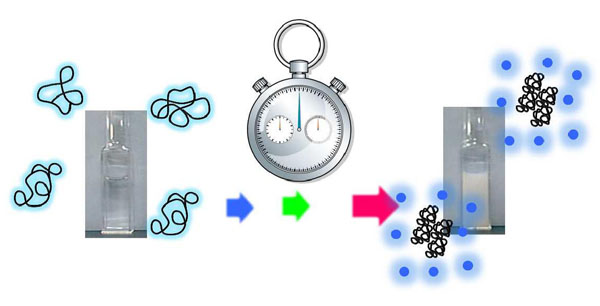- “Effects of Syndiotacticity on the Dynamic and Static Phase Separation Properties of Poly(N-Isopropylacrylamide) in Aqueous Solution”
- J. Phys Chem. B, Vol. 120 (2016), 7724-7730.
- DOI: 10.1021/acs.jpcb.6b03200

The dynamic and static phase separation behavior in aqueous poly(N-isopropylacrylamide) (PNIPAM) solutions is highly sensitive to the tacticity of PNIPAM. We investigated the phase separation dynamics of aqueous solutions of PNIPAM with different tacticities (atactic and syndiotactic-rich types) and found that the phase separation dynamics of syndiotactic-rich PNIPAM was much different from that of atactic-type PNIPAM. First, phase separation in syndiotactic-rich PNIPAM was faster. Second, there was a critical point (Ccp) in the concentration dependence of the phase separation rate: the phase separation accelerated dramatically when the solution concentration was higher than 2.0 wt % (= Ccp). Third, syndiotactic-rich PNIPAM required a higher thermal energy for phase separation compared to atactic PNIPAM. Such behavior can be explained on the basis of the high hydrophobicity of syndiotactic-rich PNIPAM in a dehydrated state and a diffusion-controlled aggregation model. The present study shows that precise control of the stereoregularity will open new channels toward the design and development of stimuli-responsive-polymer-based smart materials.
